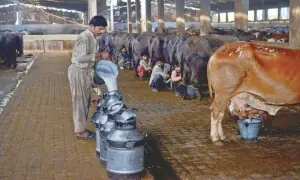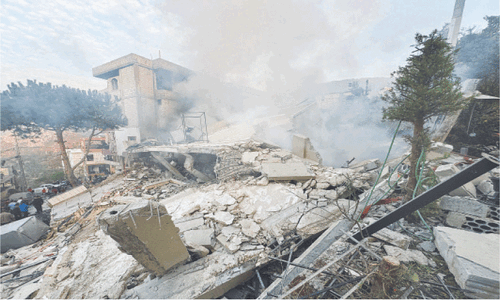KARACHI: Haleem is more than a delicious meat and lentil dish during Muharram. It is a rich tradition that has been going on for centuries.
That is also why those youngsters seen whiling away their time in the streets, playing cricket or football, are seen stacking two or three bricks or gathering pieces of wood by the roadside for putting together makeshift stoves.
Hands known for hitting powerful shots, sixes and fours that broke so many windows in the neighbourhood prove helpful otherwise. They chop onions, wash wheat and lentils, clean meat and stand for hours stirring the contents of the cauldrons on the 9th and 10th of Muharram.
Haleem cooks the entire night. It is a slow-cooked stew. Therefore, preparations for cooking it take time. No problem. No one minds. If one set of hands gets tired of the stirring, another takes over. They may take turns, but no one backs out.
You get to witness such sights all over town — in lanes and streets, by the roadsides, footpaths and on roundabouts. They are especially present in areas from where the Muharram procession will pass. And the Haleem had better be ready by then.
Of course, all Haleem is not just cooked outdoors. It is also cooked in homes. But all the Haleem on these two days is cooked for Niaz distribution.
Haleem cooked together is also shared with the people in mourning throughout this period, especially on Ashura, and also with friends, relatives and the less fortunate.
It symbolises charity, unity and respect, as most of the people cooking the traditional dish are Sunnis, who offer it to their Shia brothers and sisters, who are busy with their religious obligations during this time.
Published in Dawn, July 6th, 2025



































